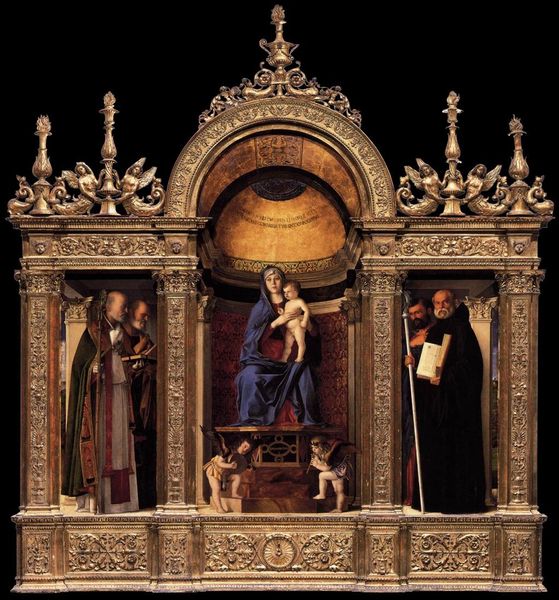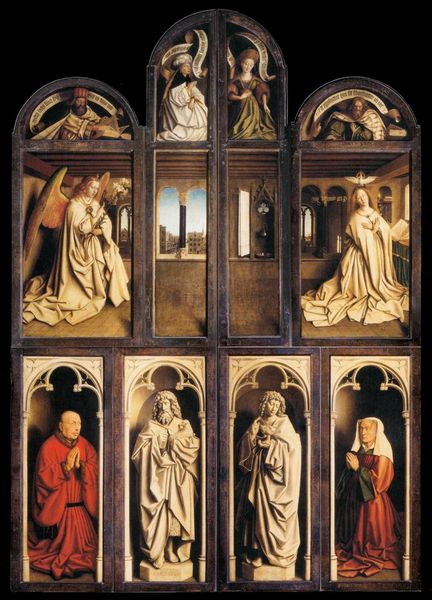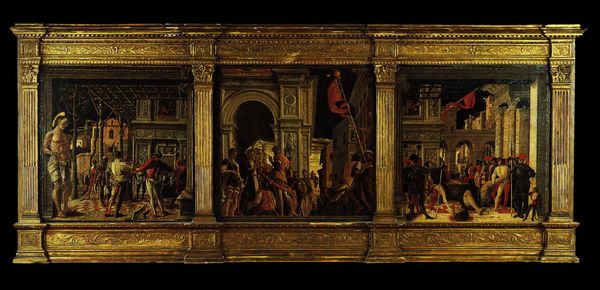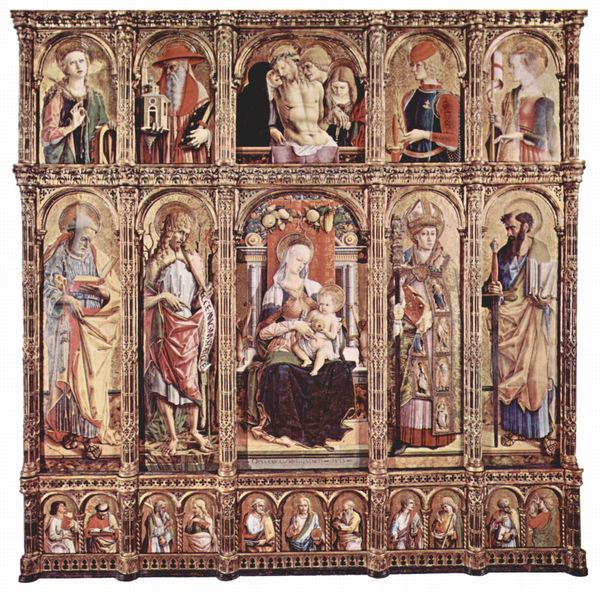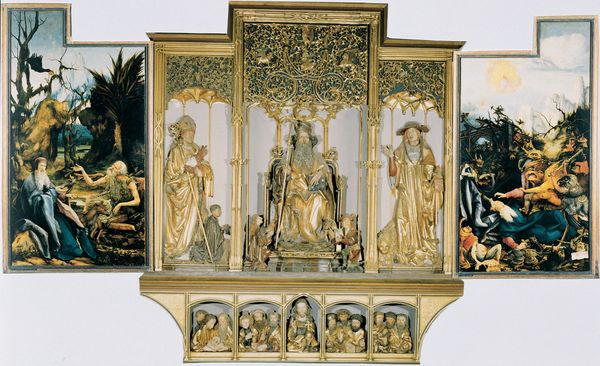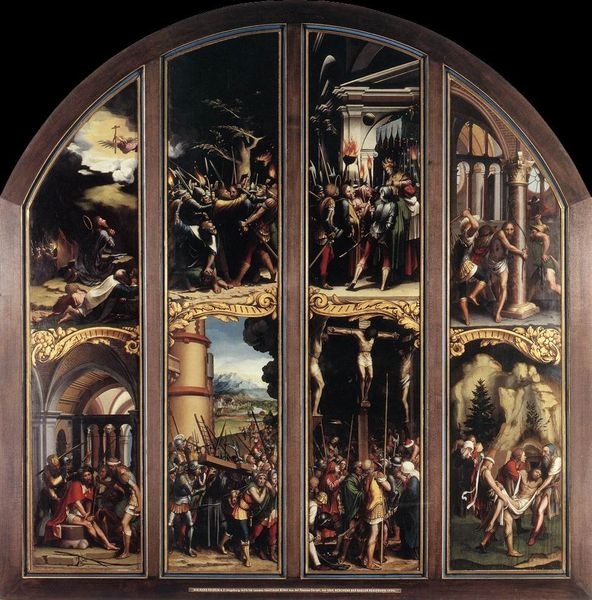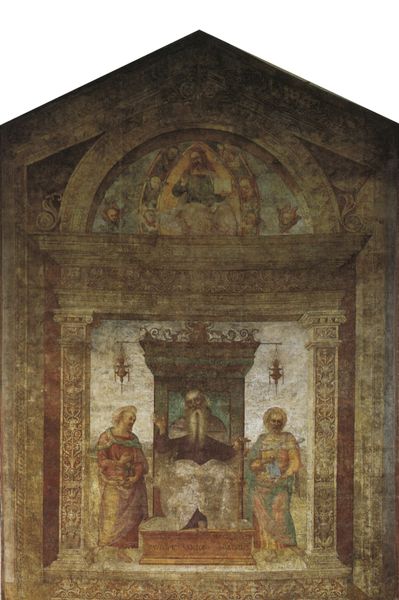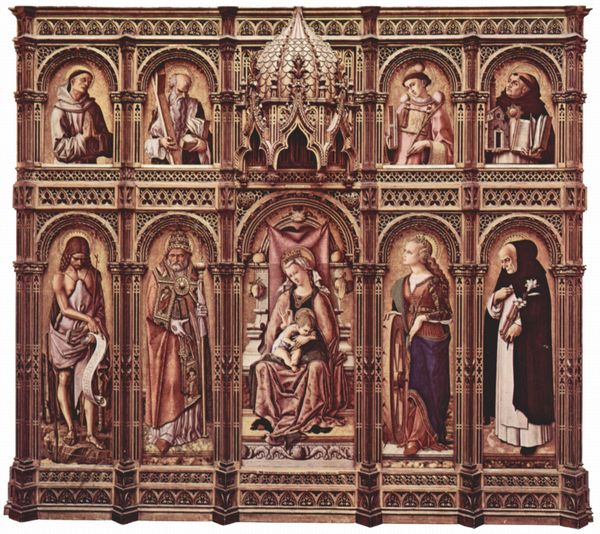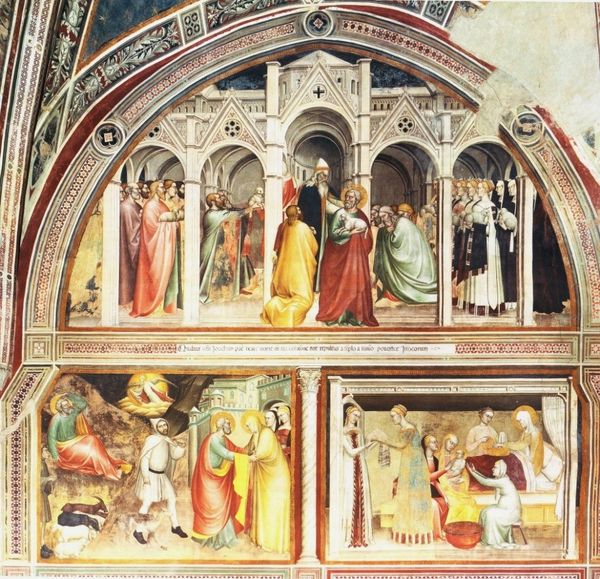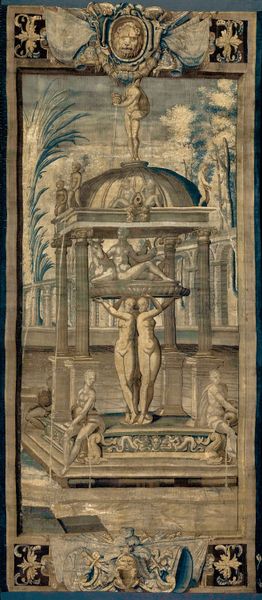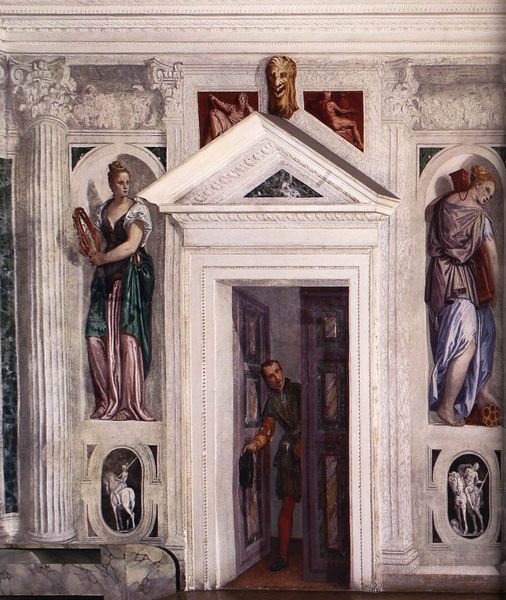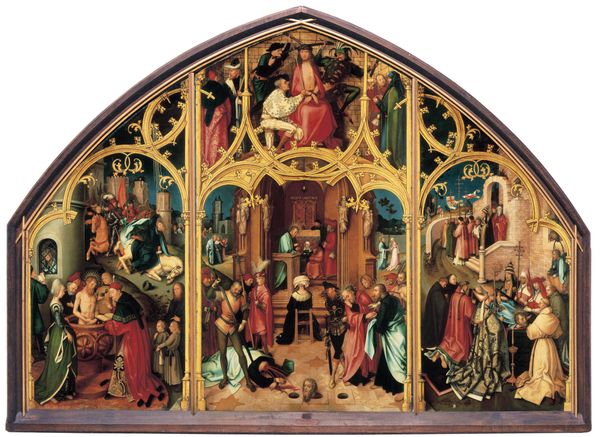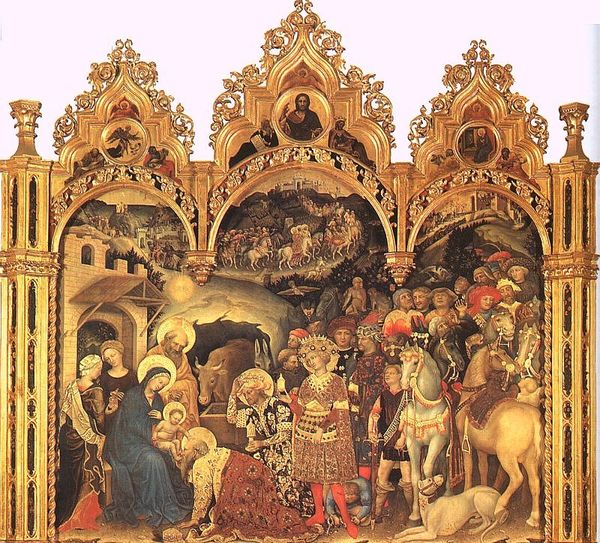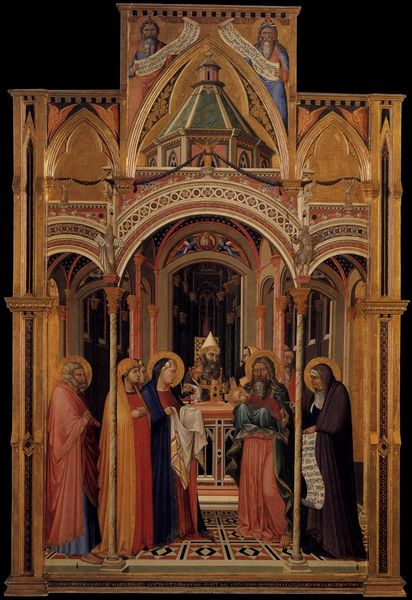
Polyptych of San Vincenzo Ferreri 1468
0:00
0:00
giovannibellini
Basilica dei Santi Giovanni e Paolo (San Zanipolo), Venice, Italy
tempera, painting
#
portrait
#
tempera
#
painting
#
sculpture
#
holy-places
#
figuration
#
historic architecture
#
traditional architecture
#
christianity
#
history-painting
#
italian-renaissance
#
early-renaissance
#
christ
Copyright: Public domain
Editor: Right, next up we have Giovanni Bellini's "Polyptych of San Vincenzo Ferreri", created around 1468 using tempera paint. It’s striking how the gold ornamentation around each panel contrasts with the somber expressions of the figures within. What do you make of its impact? Curator: Well, beyond its aesthetic qualities, this polyptych tells us a great deal about the socio-political landscape of 15th-century Venice. Polyptychs like this were often commissioned by wealthy patrons or religious orders, not just for devotional purposes, but also to display their power and influence. Notice how the figure of Saint Vincent Ferrer is centrally positioned; this speaks to his importance in the Dominican order and perhaps to the specific interests of whoever commissioned the piece. Do you see how Bellini employs perspective in each panel? Editor: Yes, I see how the perspective shifts our focus to different areas and figures. How would you say that that specific choice influences its message? Curator: Consider that Bellini operated within a complex network of artistic traditions and patronage demands. The way he balances traditional religious iconography with these emerging Renaissance techniques signifies not only his skill as an artist, but also how cultural and artistic values were being renegotiated during this time. Editor: That's a really fascinating way of framing it, thinking about it as this intersection of faith, artistic progress, and social positioning. I was so focused on the visual aspects but seeing it as a historical artifact really changes my perspective. Curator: Exactly! It's not just a beautiful object, it's a window into a specific moment in Venetian history and cultural development. Considering how and why art was created, displayed, and valued reveals the political powers at play in art history.
Comments
No comments
Be the first to comment and join the conversation on the ultimate creative platform.
